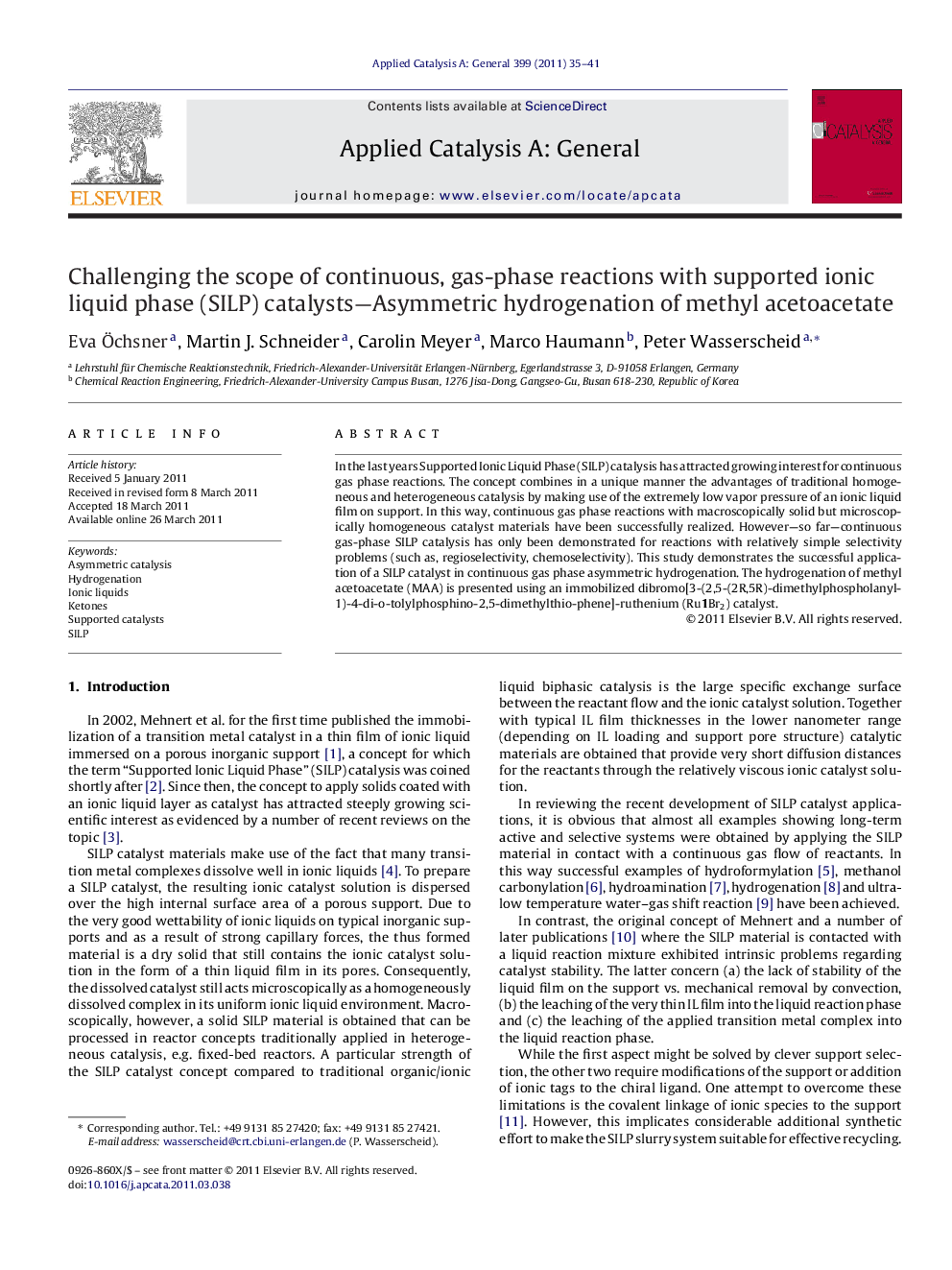| کد مقاله | کد نشریه | سال انتشار | مقاله انگلیسی | نسخه تمام متن |
|---|---|---|---|---|
| 41426 | 45889 | 2011 | 7 صفحه PDF | دانلود رایگان |

In the last years Supported Ionic Liquid Phase (SILP) catalysis has attracted growing interest for continuous gas phase reactions. The concept combines in a unique manner the advantages of traditional homogeneous and heterogeneous catalysis by making use of the extremely low vapor pressure of an ionic liquid film on support. In this way, continuous gas phase reactions with macroscopically solid but microscopically homogeneous catalyst materials have been successfully realized. However—so far—continuous gas-phase SILP catalysis has only been demonstrated for reactions with relatively simple selectivity problems (such as, regioselectivity, chemoselectivity). This study demonstrates the successful application of a SILP catalyst in continuous gas phase asymmetric hydrogenation. The hydrogenation of methyl acetoacetate (MAA) is presented using an immobilized dibromo[3-(2,5-(2R,5R)-dimethylphospholanyl-1)-4-di-o-tolylphosphino-2,5-dimethylthio-phene]-ruthenium (Ru1Br2) catalyst.
Figure optionsDownload high-quality image (113 K)Download as PowerPoint slideHighlights
► SILP catalysis allows asymmetric ketone hydrogenation as gas phase reaction.
► ee's between 65% and 82% ee were obtained for more than 100 h time-on-stream.
► Performance in tube reactor is superior to reaction in Berty reactor.
► Formation of heavy by-products is a main threat for catalyst stability.
Journal: Applied Catalysis A: General - Volume 399, Issues 1–2, 31 May 2011, Pages 35–41